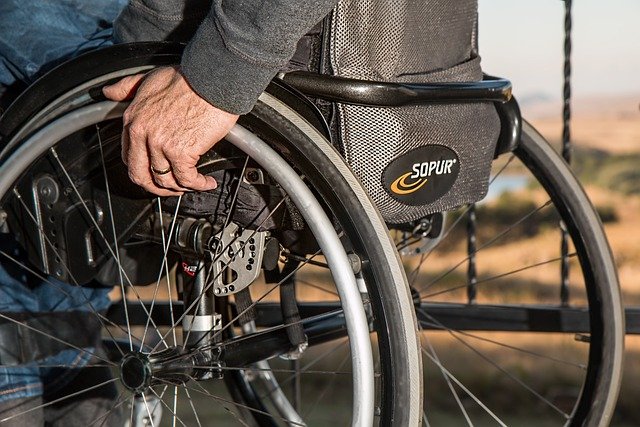Search Regaining Independence With Mobility Scooters: A Guide for Seniors
As people age, maintaining independence becomes increasingly important, yet mobility challenges often make daily activities more complicated. Many seniors may find walking long distances uncomfortable or even unsafe, leading to reduced engagement with friends, family, and community life. In response, mobility scooters have become a trusted solution, offering comfort, accessibility, and renewed freedom for older adults facing physical limitations.

Why are mobility scooters popular among seniors?
Mobility scooters have gained significant popularity among seniors due to their ability to enhance independence and quality of life. These devices provide a safe and comfortable means of transportation for those with limited mobility, allowing seniors to navigate their homes, neighborhoods, and public spaces with ease. Mobility scooters offer the freedom to run errands, attend social gatherings, and enjoy outdoor activities without the fear of fatigue or falling. Additionally, many models are designed with user-friendly features, such as adjustable seats, easy-to-use controls, and ample storage space, making them an attractive option for older adults seeking to maintain their autonomy.
What are the coverage options for mobility scooters?
Understanding coverage options for mobility scooters is crucial for seniors considering this mobility aid. Various insurance plans and programs may provide partial or full coverage for these devices, depending on the individual’s circumstances and medical needs. Private insurance policies, Medicare, and Medicaid are potential sources of coverage for mobility scooters. However, it’s important to note that coverage criteria and benefits can vary significantly between providers and plans. Seniors should carefully review their insurance policies and consult with their healthcare providers to determine their eligibility for coverage and explore the most suitable options for their specific situation.
How do Medicare and Medicaid support mobility devices?
Medicare and Medicaid play a significant role in supporting seniors’ access to mobility devices, including scooters. Medicare Part B may cover power-operated vehicles (POVs) or mobility scooters if they are deemed medically necessary and prescribed by a doctor. To qualify, seniors typically need to demonstrate that they have limited mobility, cannot operate a manual wheelchair, and can safely operate a scooter. Medicaid coverage for mobility scooters varies by state but often includes similar medical necessity requirements. Both programs may require documentation from healthcare providers and may have specific guidelines regarding the type and features of covered mobility devices.
How can the right equipment help regain daily freedom?
Selecting the appropriate mobility scooter can significantly impact a senior’s ability to regain daily freedom and independence. The right equipment should be tailored to the individual’s specific needs, lifestyle, and physical capabilities. Factors to consider include the scooter’s weight capacity, turning radius, battery life, and overall dimensions. For instance, a compact, lightweight scooter might be ideal for indoor use and easy transportation, while a more robust model with increased battery life could be better suited for outdoor adventures and longer distances. By choosing equipment that aligns with their daily activities and environment, seniors can confidently navigate their surroundings and engage in meaningful experiences.
What unique considerations exist for mobility scooters in the USA?
In the United States, several unique considerations come into play when using mobility scooters. The Americans with Disabilities Act (ADA) ensures that public spaces and businesses must accommodate mobility devices, including scooters. This legislation has led to improved accessibility in many areas, such as wider doorways, ramps, and elevators. However, seniors should be aware of local regulations regarding the use of mobility scooters on sidewalks, in stores, and on public transportation. Some cities may have specific rules about where scooters can be operated or parked. Additionally, the diverse geography and climate across the USA means that seniors should consider weather-resistant models in areas prone to rain or extreme temperatures.
What are the costs and options for mobility scooters?
When considering a mobility scooter, it’s essential to understand the range of options available and their associated costs. Mobility scooters come in various types, from compact travel models to heavy-duty outdoor scooters, each with different features and price points.
| Scooter Type | Provider Example | Cost Estimation |
|---|---|---|
| Travel Scooter | Pride Mobility | $800 - $1,500 |
| Mid-Size Scooter | Golden Technologies | $1,500 - $3,000 |
| Heavy-Duty Scooter | Afikim Mobility | $3,000 - $5,000+ |
| Folding Scooter | EV Rider | $1,200 - $2,500 |
| All-Terrain Scooter | Merits Health Products | $2,500 - $4,500 |
Prices, rates, or cost estimates mentioned in this article are based on the latest available information but may change over time. Independent research is advised before making financial decisions.
The cost of a mobility scooter can vary significantly based on its features, durability, and intended use. Basic models designed for indoor use tend to be more affordable, while robust outdoor models with advanced features command higher prices. It’s important to consider not only the initial purchase cost but also long-term expenses such as maintenance, battery replacement, and potential accessories. Many providers offer financing options or rental programs, which can make these mobility aids more accessible to seniors on fixed incomes.
In conclusion, mobility scooters offer a valuable solution for seniors looking to maintain their independence and active lifestyles. By understanding the various options, coverage possibilities, and considerations specific to the United States, older adults can make informed decisions about incorporating these devices into their daily lives. With the right mobility scooter, seniors can confidently navigate their world, stay connected with their communities, and enjoy a renewed sense of freedom and autonomy.




